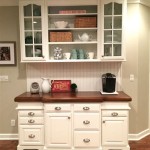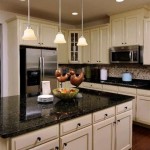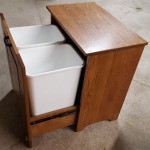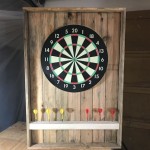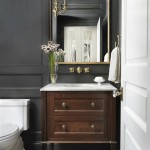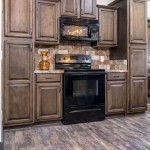List of Drawing Cabinets in SketchUp References Revit
The efficient management of architectural drawings is a critical aspect of any design project. Drawing cabinets, both physical and digital, serve as central repositories for plans, elevations, sections, and other vital documentation. Within the context of Building Information Modeling (BIM) workflows, the integration of SketchUp and Revit presents unique challenges and opportunities for managing drawings and associated data. While SketchUp excels in conceptual design and early-stage modeling, Revit is typically employed for detailed design development, documentation, and construction administration. This necessitates a cohesive system for referencing and retrieving drawings across both platforms. This article outlines a range of drawing cabinet concepts and their implications for SketchUp and Revit users, focusing on best practices for organizing, accessing, and referencing drawings within a BIM environment.
The term "drawing cabinet," in the digital realm, extends beyond a simple folder structure. It encompasses the methodologies and software tools used to manage and track drawing revisions, dependencies, and associated metadata. In a SketchUp-Revit workflow, this can involve linking external drawing files, embedding raster images, or leveraging cloud-based data management platforms. Each approach has its advantages and disadvantages, depending on the project size, complexity, and the collaborative environment.
Understanding the Needs for Drawing Management in a SketchUp-Revit Workflow
Effective drawing management is crucial for several reasons within a SketchUp-Revit workflow:
Version Control: Architectural projects undergo numerous revisions throughout their lifecycle. A robust drawing management system ensures that all stakeholders are working with the latest versions of drawings, minimizing the risk of errors and inconsistencies. This is particularly important when design changes are implemented in SketchUp and need to be reflected in Revit documentation, or vice versa. Clear versioning conventions and access controls are essential.
Collaboration: Large architectural projects often involve multiple teams working concurrently. A centralized drawing cabinet facilitates seamless collaboration by providing a single source of truth for all project documentation. This eliminates the need for individual team members to maintain their own copies of drawings, reducing the potential for conflicts and discrepancies.
Data Retrieval: The ability to quickly and easily retrieve specific drawings is essential for efficient design and construction administration. A well-organized drawing cabinet, coupled with effective search and filtering capabilities, can significantly reduce the time spent searching for information. Consistent naming conventions and metadata tagging are key to achieving this.
Archiving: Once a project is complete, it is important to archive all project documentation, including drawings, in a secure and accessible location. A well-structured drawing cabinet facilitates this process by providing a clear and comprehensive record of the project's design and construction history.
The needs outlined above highlight the importance of a cohesive strategy that spans both SketchUp and Revit environments. The following sections detail methods for establishing such a strategy.
Methods for Referencing Drawings in SketchUp and Revit
Several methods can be employed to reference and manage drawings within a SketchUp-Revit workflow. The choice of method depends on the specific requirements of the project, the level of integration desired, and the available resources.
Linked Files: This method involves linking external drawing files (e.g., DWG, PDF) into either SketchUp or Revit. In SketchUp, this can be achieved by importing the drawing as a DWG or DXF file. In Revit, drawings can be linked through the "Insert" tab. The main advantage of this approach is that the drawing remains an external file, which can be updated independently of the model. When the linked file is updated, the changes are automatically reflected in the SketchUp or Revit model. This approach is suitable for referencing drawings that are frequently updated or that originate from external consultants.
The downside of using linked files is the potential for broken links if the file path changes or the drawing file is moved or renamed. This can be mitigated by using relative file paths and by establishing a clear folder structure for all project drawings. The size and complexity of linked drawings can also impact the performance of SketchUp and Revit, particularly when dealing with large or highly detailed drawings. It's crucial to optimize the drawing files before linking them.
Embedded Raster Images: Another approach is to embed raster images (e.g., JPG, PNG) of drawings into SketchUp or Revit. This method is simpler than linking files, but it offers less flexibility and control. When a raster image is embedded, it becomes part of the model file and is no longer linked to the original drawing file. This means that any changes to the original drawing will not be reflected in the model. This method is suitable for referencing drawings that are not frequently updated or that are used for visual reference only.
The disadvantage of using embedded raster images is the potential for loss of quality if the image is scaled or zoomed. Raster images also tend to be larger than vector-based drawings, which can impact the performance of SketchUp and Revit. The resolution of the raster image should be carefully considered to balance image quality and file size.
Cloud-Based Data Management Platforms: Cloud-based data management platforms, such as Autodesk BIM 360 Docs or Procore, provide a centralized repository for all project documentation, including drawings. These platforms offer advanced features for version control, collaboration, and access control. They also integrate with both SketchUp and Revit, allowing users to access and manage drawings directly from within these applications. This approach is particularly suitable for large and complex projects that involve multiple teams and stakeholders.
The drawbacks of using cloud-based platforms include the cost of subscription and the reliance on a stable internet connection. The learning curve associated with using these platforms can also be a challenge for some users. However, the benefits of improved collaboration, version control, and data security often outweigh these drawbacks.
Naming Conventions and Folder Structures: Regardless of the method used to reference drawings, it is essential to establish consistent naming conventions and folder structures. This will make it easier to find and manage drawings, and it will reduce the risk of errors and inconsistencies. The naming convention should include information such as the drawing number, title, revision number, and date. The folder structure should be logical and intuitive, and it should reflect the project's organizational structure. A well-defined and consistently applied naming convention dramatically reduces time spent searching for documents.
Key Considerations for Implementing a Drawing Management System
Implementing an effective drawing management system for a SketchUp-Revit workflow requires careful planning and consideration of several key factors:
Standardization: Establishing clear standards for drawing formats, naming conventions, folder structures, and version control is essential for ensuring consistency and interoperability between SketchUp and Revit. These standards should be documented and communicated to all project stakeholders.
Training: Providing adequate training to all users on the drawing management system is crucial for ensuring that they understand how to use it effectively. Training should cover topics such as how to link and embed drawings, how to manage versions, how to use the search and filtering capabilities, and how to adhere to the established standards.
Collaboration Tools: Utilizing collaboration tools, such as cloud-based platforms or project management software, can significantly improve the efficiency and effectiveness of the drawing management system. These tools facilitate communication, streamline workflows, and provide a centralized repository for all project documentation.
Auditing: Regularly auditing the drawing management system to ensure that it is being used correctly and that the established standards are being followed is important for maintaining the integrity of the project data. Audits should be conducted by a designated member of the project team who is responsible for overseeing the drawing management system.
Security: Implementing appropriate security measures to protect project drawings from unauthorized access or modification is essential, especially when using cloud-based platforms. These measures should include access controls, encryption, and regular backups.
In conclusion, the successful integration of SketchUp and Revit in a BIM workflow hinges on a well-defined and consistently implemented drawing management system. By carefully considering the methods for referencing drawings, establishing clear standards, and providing adequate training, architectural firms can significantly improve the efficiency, accuracy, and collaboration of their design processes. The concepts discussed above provide a framework for developing a robust drawing cabinet strategy that maximizes the benefits of both SketchUp and Revit.

Graphic Standards For Architectural Cabinetry Life Of An Architect

The Ultimate Guide To Modeling Cabinets In Sketchup

Show Me Your Drawings Layout Sketchup Community

Graphic Standards For Architectural Cabinetry Life Of An Architect

Graphic Standards For Architectural Cabinetry Life Of An Architect

Perfect Cabinets With Cut List Bill Of Material Upwork

Announcement My New Ebook Sketchup And Traditional Cabinets Finewoodworking

Cabinetmaker Vs Customer Presentation Drawing Sketchup Community

Ai Powered Revit Plug In For Kitchens And Cabinetry

The Ultimate Guide To Millwork Drawings 2024
Related Posts


